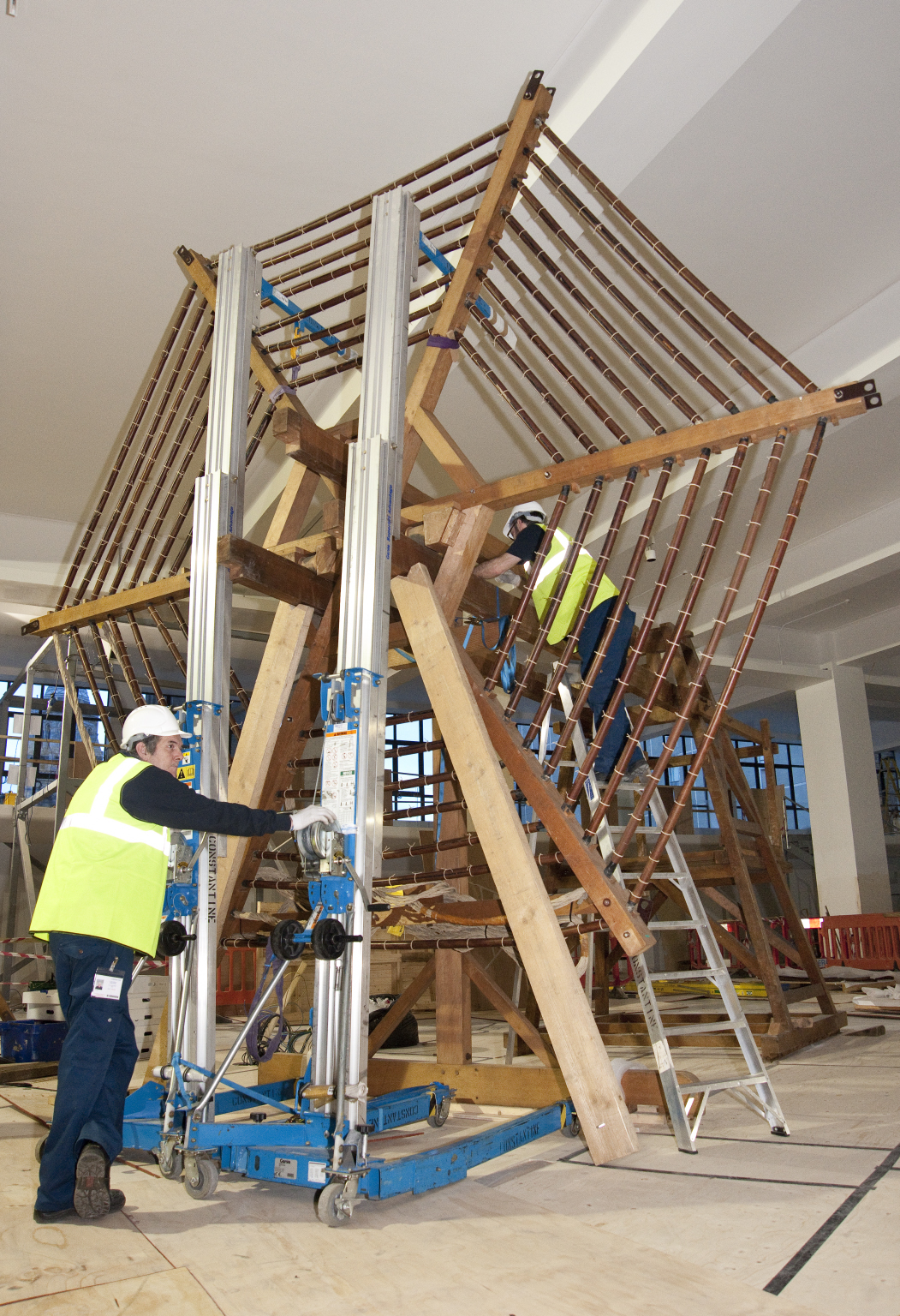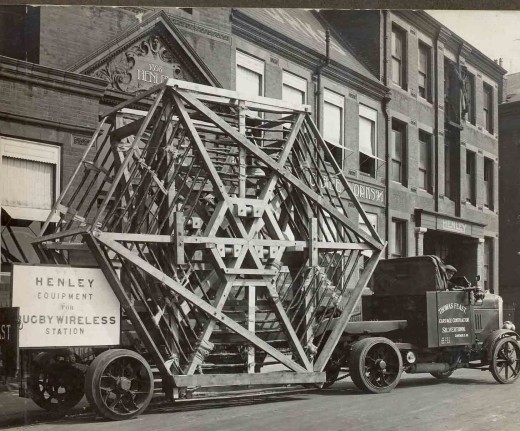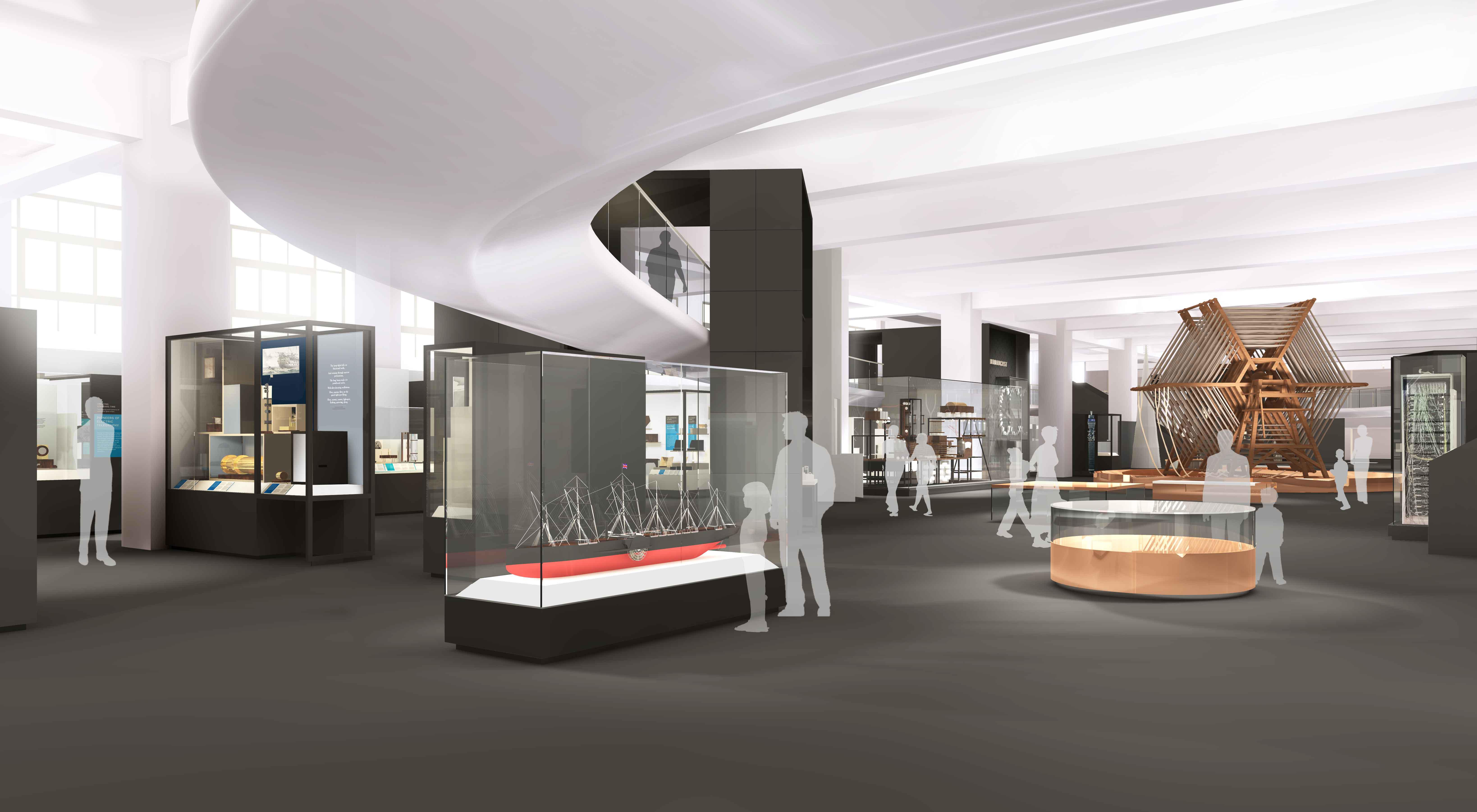Dan Green, Content Developer, reflects on the incredible story of the Rugby Tuning Coil, one of the star objects of the Science Museum’s brand new Information Age gallery which opens in October.
The aerial inductance coil from Rugby Radio Station will soon have a new home at the Science Museum – see it being installed in the video below.
Measuring 6 metres high and resembling a series of giant spiders’ webs, this monumental coil is a powerful reminder of the invisible infrastructure which supports our desire to communicate.
Based at Rugby Radio Station, where it was housed in a huge cathedral-like room, the coil played a vital role in tuning a huge radio transmitter that sent out very low frequency signals. It was part of a huge system that linked the transmitter to the aerial masts, enabling messages to be sent and telegrams to be transmitted. During its long life, Rugby Radio held a huge personal resonance for many individuals, connecting people to each other, to the world and to home.

Rugby Radio Station began transmitting very low frequency signals on 1 January 1926 using the call sign GBR. Once the world’s most powerful radio transmitter, its very low frequency waves could follow the curvature of the Earth to travel very long distances, enabling one-way communication to Britain’s Empire. It transmitted wireless telegraph messages from the British Foreign Office, standard time signals from Greenwich, news bulletins, personal telegrams and Christmas greetings.
Although first hailed as a matter of national pride, in later years Rugby Radio Station was a hidden secret that played an important role in the Cold War, as its very low frequency signals could be picked up by submarines.

Godfery Dykes, one of many submarine communication operators, sat in a claustrophobic communications cabin, hunched over the radio, headphones on, sick bucket between his legs, receiving the Morse code signals. His role was to write down in pencil the dots and dashes coming through at the incredible speed of 30 words a minute, a rate that was undecipherable to the untrained ear. The dots and dashes would then be decoded and the messages delivered:
‘GBR meant a lot to us and we used the letters GBR in many ways. At the start of our patrol I used to think Goodbye BeRyl (my wife) …simply to hear Rugby’s call sign meant to me all those I loved back in the UK were still safe. I well remember moments of excitement on coming shallow to periscope depth after many hours down deep, watching the depth gauge creep slowly past 150 feet, 125, feet, 100 feet and then 75 feet, faint at first, that most lovely sound started to fill my ears – God Bless Rugby, GBR’
On 31 March 2003, 77 years after it transmitted its first Morse message, Rugby Radio station ceased broadcasting its very low frequency signals around the world. A year later, the twelve 250m high masts that radiated out Rugby’s signals were demolished, marking the end of an era. Former station manager Malcolm Hancock was invited to detonate the first explosion:
“They had been there for so long and the red lights (on top of the masts) had always been there whenever you came home. That is what all the local people in Rugby say, ‘Oh yeah, the thing we’re going to miss is not seeing the red lights saying – oh we’re nearly home now’”.
The coil was donated to the Science Museum by BT Heritage and Archives soon after the decommissioning of Rugby Radio Station. From 25 October, you can see the Rugby Tuning Coil displayed in public for the first time at the centre of the Information Age gallery, as reflected in this artist’s impression.

To discover more visit sciencemuseum.org.uk/informationage or follow the conversation online via #smInfoAge